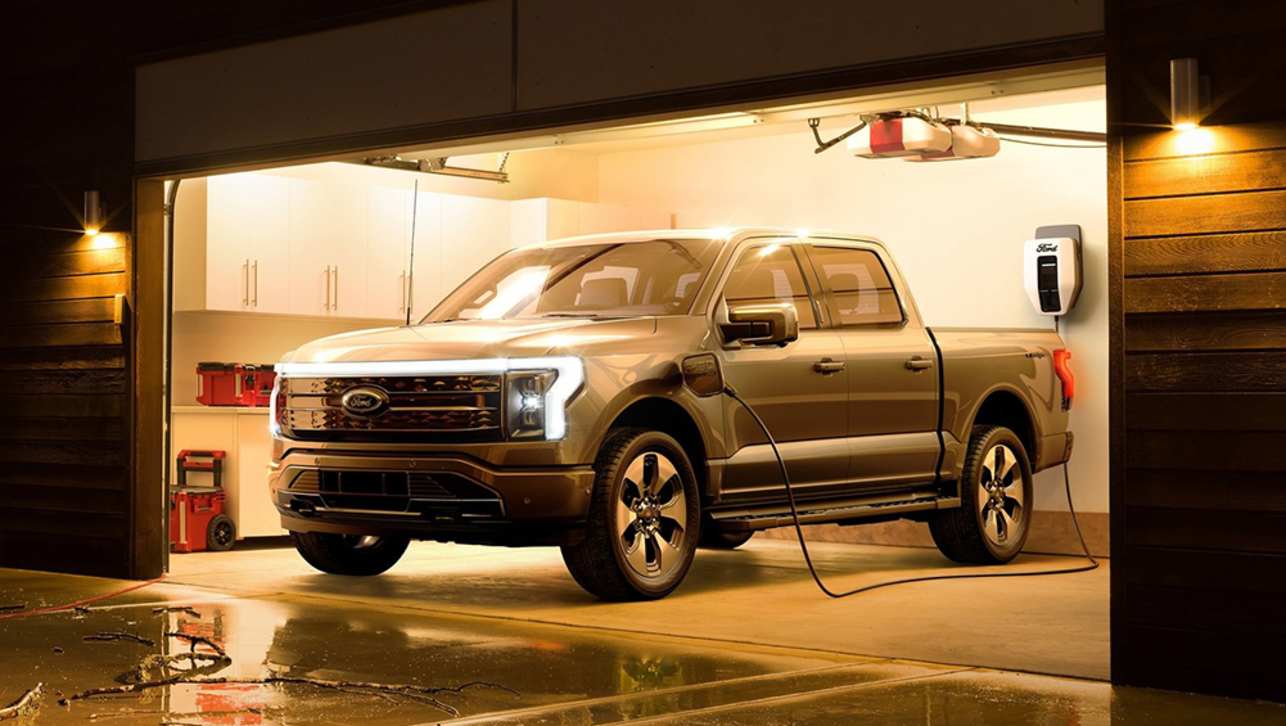Australia is the lucky country. Aside from the natural wonders, we’re blessed with a wide variety of automotive choices - from pint-size Kia Rios to hulking Toyota LandCruisers. But that doesn’t mean we can’t wish for more.
As should have become clear by now, the motoring world is moving toward an electrified future and already Australia is falling behind in the race. While we can buy a Tesla Model 3, Nissan Leaf+ and Audi e-tron, to name a few, there are some very notable models we’re currently missing out on in the land down under.
Here are the electric vehicles we’d like to see hit Australian showrooms as soon as possible. Hopefully the recent introduction of EV incentives can help change some minds in boardrooms in Australia and overseas.
Ford F-150 Lightning

It’s the car that Scott Morrison dreams of - a tradie-friendly ute that can tow your boat and help you go camping. The recently unveiled new addition to America’s most popular pick-up range has the potential to change the EV debate both in the US and Australia.
The Lightning ticks the boxes for what so many ute-loving Australians want. It still has all the practical benefits of a ute, including a 907kg payload in the tray and can tow more than 4500kg, but adds unique extras. Such as its ‘front trunk’ that adds an extra 400L of storage space under the bonnet, and it even comes with power outlets.
It’s also suitably powerful, with the choice of a 318kW or 420kW all-wheel drive powertrain, and has a range of up to 483km with its extended-range battery.
Ford is also hoping the Lightning will be as popular as other models in the F-150 line-up, which will allow for greater economies-of-scale which that help keep the price affordable. Unfortunately, like the petrol-powered F-150s, Ford Australia has been unable to convince head office to build the Lightning in right-hand drive.
Ford Mustang Mach-E

What’s Australia’s second-most popular vehicle type after utes? Why SUVs, of course, particularly sporty ones. Which is why we’ve written again and again about the tragedy that is the left-hand-drive-only Mustang Mach-E.
It combines the key elements that customers want and Ford’s decision to brand it a Mustang brings history and cache to an all-new model. It would make an ideal rival for the likes of the incoming Tesla Model Y, Hyundai Ioniq 5 and Kia EV6 as one of the first mass-appeal EV SUVs, but sadly it looks not to be thanks to overseas demand.
The combination of the Lightning and Mach-E has the potential to change the course of Ford Australia’s future, but for now both seem destined to never set a wheel on our tarmac.
Volkswagen ID.3 and ID.4
.jpg)
Few brands have been as vocal about the need for EVs in Australia as Volkswagen and with good reason. Aside from the obvious PR benefits for a brand still recovering from the diesel emissions scandal, the ID.3 hatch and ID.4 SUV are winning praise in Europe where they’re already on sale.
Volkswagen’s position as a ‘semi-premium’ brand in the local market gives it as good a platform as any Top 10 brand to move into the more expensive EV market, and both the Golf-sized ID.3 and Tiguan-sized ID.4 are sure to have appeal to local customers.
The same is true of the ID.3’s Spanish cousin, the Cupra Born, which is another stylish and sophisticated EV that could win over Australian buyers.
However, while Volkswagen is aiming to have all three in Australia eventually, for now there’s no clear timeframe when that will happen, so we’re forced to admire from afar.
Skoda Enyaq iV

Unlike the Volkswagen ID.4 that it’s based on, Skoda’s all-new Enyaq iV is less certain to ever make it to Australia. Which is a shame, because like all models in the Czech brand’s portfolio, the Enyaq looks sharp and comes in a number of specification levels, including a sporty RS.
The range-topping RS packs a 225kW punch from its pair of motors and has a driving range of up to 460km, according to the company. At the other end of the spectrum, the entry-level Enyaq has a 109kW motor, rear-wheel drive and 340km of range.
Given the shared VW platform and the inevitable shift towards EVs perhaps the Enyaq iV will make it here once the ID.4 is established locally.
Subaru Solterra

Subaru had been suspiciously quiet on the EV front until earlier this year. That’s when it revealed it had partnered with Toyota to produce its own version of the bZ4X electric SUV, known as the Solterra.
Despite being set for the right-hand drive Japanese market, Subaru is set to focus on China, Europe and the US, and leave Australia on the sidelines. While not officially ruled out permanently, there’s no clear pathway for the Solterra to join the local line-up and create a zero-emissions alternative to the Forester.
Fiat 500e

Fiat’s future in Australia looks uncertain. Or, at the very least, the Italian brand’s future currently looks very much like its present, with no public plans to introduce the new-generation 500e to replace the current model.
Instead, the petrol-powered 500 looks set to carry on production unchanged until such time as it no longer sells in suitable volume around the world. But while that is happening in other markets, the 500e will arrive as a pint-sized, city-friendly EV with some retro style and plenty of charm.
While it retains the same throwback looks, underneath it has an advanced lithium-ion battery that’s capable of up to 320km of driving range and fast charging (50km in just five minutes). It’s a lovely combination of old and new that could help Fiat lead itself into a brighter future down under - if it gets the chance.
Honda e

Like the Fiat, the Honda e manages to brilliantly combine the past and the future. Instead of creating an aerodynamically-efficient but characterless blob like some EVs, Honda opted to turn back the clock and use the original boxy Civic as design inspiration for its electric small car.
But despite its widespread acclaim, Honda has opted to focus on the Japanese and European markets that are more accepting of EVs. Fingers crossed that changes during the life of the cute little Honda e.
Peugeot e-2008

Like the Volkswagens and Cupra, this is another one of those models that is more a case of ‘when’ rather than ‘if’ the little Peugeot will make it to Australia. But as it’s already available in Europe, we can lament our current position missing out on this French compact SUV.
The e-2008 is powered by a 100kW electric motor and has a claimed driving range of more than 300km, which would make it competitive (if not class-leading) with the similar-sized Hyundai Kona Electric and MG ZS EV.
The good news is Peugeot is talking positively about expanding its EV offerings in Australia and the e-2008 could be headed our way in 2022.
Audi Q4 e-tron

The German premium brand has been steadily expanding its EV offerings since the launch of the e-tron. Already here or confirmed for imminent arrival is the e-tron S (and matching Sportback), e-tron GT and RS e-tron GT. Not confirmed, however, is the Q4 e-tron and the Q4 e-tron Sportback.
Let’s hope that’s just a matter of timing, perhaps waiting for the previously mentioned models to arrive and create some clear space for the Q4 e-tron to make its separate entrance.
It has clear potential for an Australian market enthralled by prestige SUVs, even if it does share its underpinnings with the Volkswagen ID.4. It looks like an Audi on the surface and underneath it has the choice of either a 125kW, 150kW or 220kW powertrain to provide plenty of choice.
Given the recent arrival of the Mercedes-Benz EQA and impending Volvo XC40 Recharge Pure Electric, Audi will surely want to join the fray with its own compact electric SUV.


-2.jpg)





.jpg)

.jpg)
.jpg)



.jpg)
.jpg)

.jpg)
.jpg)
.jpg)

.jpg)

.jpg)


.jpg)

.jpg)


Comments